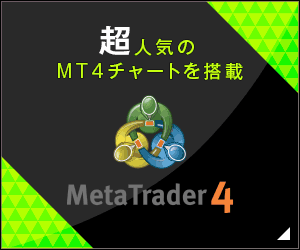Introduction
Automated trading systems are an attractive tool for many traders, yet effective risk management is crucial to their success. This article will discuss essential techniques for managing trading risks in MetaTrader 4 (MT4) and MetaTrader 5 (MT5) using the MQL4 and MQL5 programming languages. Specifically, it will cover how to set maximum lot size limits—a vital strategy for effectively managing risks and preventing unnecessary financial losses in your trading strategies.
This article is particularly aimed at beginner traders and those new to programming. Whether you’re looking to learn the basics of MQL4 and MQL5, or you’re interested in risk management for automated trading systems, you’ll find valuable information here.
Basic Concepts of MQL4 and MQL5
MQL4 and MQL5 are programming languages designed for MetaTrader 4 (MT4) and MetaTrader 5 (MT5) respectively. These languages are primarily used to automate trading strategies in the foreign exchange market (Forex). MQL4 was introduced in 2005, enabling rapid development of Expert Advisors (EAs) with its simple syntax and powerful trading capabilities. On the other hand, MQL5 was introduced in 2010, offering more advanced programming features and improved execution speed.
Differences Between MetaTrader 4 and MetaTrader 5
MetaTrader 4 (MT4) and MetaTrader 5 (MT5) are widely used trading platforms by traders worldwide. MT4 is primarily designed for the foreign exchange market, featuring a user-friendly interface and powerful chart analysis tools. In contrast, MT5 encompasses all the features of MT4 while also catering to other financial markets such as stocks and commodity futures. Additionally, MT5 offers more timeframes and chart types, along with advanced features like integrated economic calendars and additional order types.
Understanding these platforms and their associated languages is essential for automating effective trading strategies. In the following section, we’ll explain the importance of limiting lot sizes and the basic methods to implement it in MQL4 and MQL5.
The Importance of Lot Size Limitations as Risk Management
Overview of Risk Management in Trading
Risk management is a crucial element in trading. It’s the process of minimizing potential losses and growing capital in a sustainable manner. By implementing effective risk management strategies, traders can protect their capital against the uncertainties of the market movements. At the core of risk management is determining how much capital to expose to risk with each trade.
Impact of Lot Size on Risk
Lot size is an indicator of the size of a trade, with one lot typically representing 100,000 units of the base currency. The larger the lot size, the greater the impact of small market movements on profits or losses. Therefore, trading with larger lots increases the risk, especially for beginners. Conversely, by limiting lot sizes, traders can protect their capital and avoid significant losses.
For novice traders, setting lot sizes appropriately presents an excellent opportunity to learn the basics of risk management. When building automated trading systems using MQL4 or MQL5, limiting the maximum lot size through programming enables effective control of the risk associated with automated trading. In the following section, we’ll delve into the implementation of maximum lot size limitations in MQL4 and MQL5.
Maximum Lot Size Limitation Program in MQL4
MQL4 is a highly popular tool for automating trading. Here, we’ll explain how to limit the maximum lot size using MQL4.
Basic Code Structure of MQL4
MQL4 has a structure similar to C language and is used to implement trading strategies as Expert Advisors (EAs). A basic MQL4 program consists of three main functions: initialization (OnInit), main processing (OnTick), and termination (OnDeinit).
Sample MQL4 Code for Maximum Lot Size Limitation
Below is a simple MQL4 code sample for limiting the maximum lot size.
// External Parameters
extern double MaxLots = 1.0;
// EA Initialization
int OnInit()
{
if(MaxLots > 10.0) MaxLots = 10.0; // Limit maximum lot size to 10.0
return(INIT_SUCCEEDED);
}
// Called on each new tick
void OnTick()
{
// Trading logic
// Use MaxLots here to execute trades
}Explanation of Each Part of the Code
extern double MaxLots = 1.0;: This is an adjustable parameter from external sources. You can modify this value from the EA’s settings panel.OnInit(): This function is called once when the EA is loaded onto the chart. Here, we limit the maximum lot size to ensure it doesn’t exceed 10.0.OnTick(): This function is called every time new market data (tick) arrives. The trading logic is implemented within this function.
This code demonstrates a basic way to manage lot sizes effectively using MQL4. By imposing such limitations, you can manage risks and prevent potential significant losses, especially during volatile market movements. In the next section, we’ll explain a similar program for MQL5.
Maximum Lot Size Limitation Program in MQL5
MQL5 boasts more advanced features compared to MQL4 and is used in MetaTrader 5 (MT5). Here, we’ll focus on how to limit the maximum lot size using MQL5.
Basic Code Structure of MQL5
MQL5 offers more advanced features compared to MQL4, allowing for more complex trading strategies and multi-asset trading. While the basic structure of MQL5 is similar to MQL4, it supports a greater number of built-in functions and data types.
Sample MQL5 Code for Maximum Lot Size Limitation
// Input Parameters
input double MaxLots = 1.0;
// EA Initialization
int OnInit()
{
if(MaxLots > 10.0) MaxLots = 10.0; // Limit maximum lot size to 10.0
return(INIT_SUCCEEDED);
}
// Called on each new tick
void OnTick()
{
// Trading logic
// Use MaxLots here to execute trades
}Explanation of Each Part of the Code
input double MaxLots = 1.0;: This is an input parameter that users can set from the EA’s properties. The initial value for the maximum lot size is set to 1.0.OnInit(): This function is executed when the EA is loaded onto the chart. Here, we restrict the value of MaxLots to ensure it doesn’t exceed 10.0.OnTick(): This function is called every time new market data (tick) arrives. Implement the trading logic within this function.- In MQL5, the
externkeyword used in MQL4 is integrated into theinputkeyword.
While MQL5 allows access to more markets and enables the implementation of complex trading strategies, the basic principles of risk management remain unchanged. In the next section, we’ll delve into the differences in implementing lot size limitations between MQL4 and MQL5.
Comparison of MQL4 and MQL5 Code
Both MQL4 and MQL5 play crucial roles in automating trading. Here, we’ll compare the main differences and similarities between these two languages, as well as their applicability and practicality.
Main Differences Between the Two Languages
- Supported Platforms: MQL4 was developed for MetaTrader 4, while MQL5 was designed for MetaTrader 5. While MT5 offers new features and improved performance, both platforms focus on different markets.
- Functionality: MQL5 provides more advanced features compared to MQL4, supporting multi-currency strategies and native object-oriented programming.
- Execution Speed: MQL5 offers faster execution speed compared to MQL4, but MQL4 is known for its simplicity and user-friendliness.
Similarities in the Code
- Basic Structure: Both languages have a fundamental structure consisting of initialization (OnInit), main processing (OnTick), and termination (OnDeinit) functions.
- Risk Management Approach: The basic risk management approach of limiting lot sizes is common to both MQL4 and MQL5.
Comparison of Applicability and Practicality in the Code
Applicability of MQL4: MQL4 is tailored for MT4 users and is particularly suitable for simple strategies in the FX market. It’s easy for beginners to learn.
Practicality of MQL5: MQL5 is suitable for use in a wider range of markets, including stocks and futures, making it versatile. It allows for advanced trading strategies and multi-asset portfolio management.
Both MQL4 and MQL5 have their own strengths and should be chosen based on traders’ needs and trading styles. The key is to incorporate effective risk management strategies regardless of which language you use. In the next section, we’ll explain how to integrate lot size limitations into actual trading strategies.
Practical Application
Incorporating lot size limitations into trading strategies is essential for establishing the foundation of effective risk management. In this section, we’ll explain the practical application of lot size limitations and how to combine them with other risk management strategies.
Integrating Lot Size Limitations into Trading Strategies
The primary purpose of setting lot size limitations is to control potential losses in a single trade. This is particularly crucial during periods of high volatility, such as immediately after market openings or during significant economic announcements when large market movements are expected.
Step 1: Before trading, verify the maximum lot size in the settings of the EA you are using.
Step 2: Adjust the lot size considering your risk tolerance relative to your total capital. Generally, taking risks exceeding 1-2% of total capital should be avoided.
Step 3: Flexibly adjust the lot size according to market conditions. For example, it might be possible to use slightly larger lots under more stable market conditions.
Combining Lot Size Limitations with Other Risk Management Strategies
Lot size limitations can be enhanced when used in conjunction with other risk management techniques.
Setting Stop Losses: By setting stop losses for each trade, you can protect your capital from unexpected market movements.
Considering Risk-Reward Ratios: Taking into account the risk-reward ratio allows for more strategic trading. For example, if aiming for a 1:2 risk-reward ratio, you set your expected profits to be twice the potential loss.
Diversifying the Portfolio: Diversifying investments across multiple currency pairs or assets can spread risk.
While lot size limitations are a crucial aspect of risk management, remember that they function as part of an overall trading strategy. Comprehensive market analysis, strategic planning, and continuous learning and adjustments are key to success. In the next section, we will summarize the key points of this article and provide recommendations for further approaches to risk management.
In Conclusion
This article introduced methods for setting maximum lot size limitations using MQL4 and MQL5, a crucial part of trading risk management. Let’s recap the main points:
- Importance of Risk Management: Properly managing lot sizes in trades allows you to control risk and protect your capital.
- Differences and Similarities Between MQL4 and MQL5: While these languages have distinct features, their basic structures and approaches to risk management are similar.
- Practical Application: Integrating lot size limitations into trading strategies effectively manages risk and provides a more stable trading experience.
Use this information to incorporate maximum lot size limitations into your trading strategies and create a safer trading environment. Additionally, trying out MQL4 or MQL5 code in practice can enhance your programming skills. If you have any questions or uncertainties, don’t hesitate to consult with experts.
Automating trading, with a clear understanding and effective management of risks, can be highly beneficial. We hope this article serves as a valuable aid in your trading journey. As a next step, we encourage you to try coding yourself. If you have questions or feedback, please let us know through the comments section. Wishing you success in your trading endeavors!




![[2020 Award Winner] “Utility Player” Review! Explore the Reputation of Cutting-Edge EAs on the M5 Chart](https://i0.wp.com/digibeatrix.com/wp-content/uploads/2024/04/7b366626a29aab214891c131978a2c39.webp?fit=375%2C375&ssl=1)







